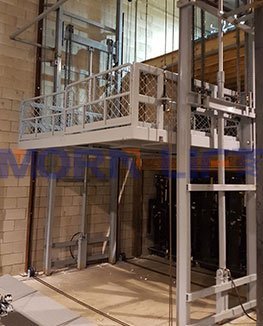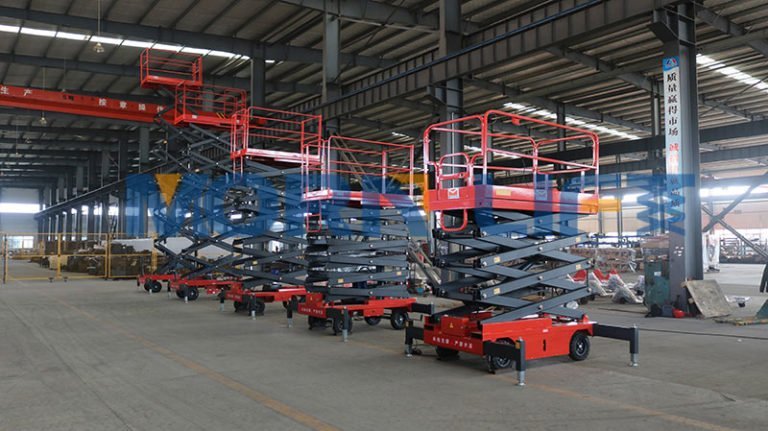Table of Contents
Indoor cargo lift introduction
Cargo lift refers to the completion of cargo transfer between floors and assembly lines, warehouses, docks, parking lots, construction, logistics and other high-altitude cargo transportation up and down by operating the control system buttons.
Standard cargo lift, hydraulic cargo lift, the load ranges from 0.3 tons to 70 tons, and the lifting height ranges from 1 meter to 30 meters. Special specifications of cargo lift and hydraulic cargo lift can also be customized according to user requirements. Because it is hydraulically driven and fixed in a certain position.

Scope of application
1. Middle and low-level workshops, with the need for cargo transportation of upper and lower floors
2. The installation location is restricted and not suitable for elevator installation
3. The geological conditions are restricted and the digging of foundation pits is not allowed
4. Special requirements such as wide or long cargo volume.
5. Generally, the lifting height does not exceed ten floors.
6. There is a demand for incoming and outgoing goods indoors or outdoors
Technical features
1. Increase the power consumption, and rely on its own weight to drop. It can be used continuously for 24 hours without stopping, and the energy consumption is low.
2. Equipped with intelligent control system such as fence mechanical automatic door (patented product), high efficiency.
3. The lifting cylinder is perpendicular to the ground, the oil seal and wear-resistant belt are less damaged, and the service life is long
4. Large carrying capacity, multi-point control, interlocking upper and lower layers, safe use and simple operation.
5. High lifting height, stable operation and no noise.
6. Equipped with safety protection devices such as loss of pressure protection, phase sequence protection, anti-falling protection, overpressure protection, fault display, etc., with low failure rate.
7. The installation location is not restricted, and it can be installed indoors and outdoors, or on any floor other than the ground, without digging a foundation pit or building a shaft.
8. Special industries with dustproof, anticorrosion, explosion-proof and other requirements can be customized.
Product features
The cargo lift is equipped with the safety device of the traditional traction elevator, and is also equipped with: overflow valve: can prevent the system pressure from being too high during upward movement, emergency manual valve: when the power fails, it can Make the car descend to the nearest floor and open the door.
Manual pump: When the system fails, the manual pump can be operated to pump high-pressure oil to make the car rise to the nearest floor; Pipeline rupture valve: when the hydraulic system pipeline When the broken car stalls and descends, it can automatically cut off the oil circuit to stop the descending. Oil tank oil temperature protection: When the oil temperature in the oil tank exceeds the standard setting value, the oil temperature protection device generates a signal, suspends the use of the elevator, and starts the elevator when the oil temperature drops.
Low cost and low failure rate: due to the advanced hydraulic system, and With a good control method, the elevator operation failure rate can be minimized. Low power consumption: When the hydraulic elevator goes down, it is driven by the pressure generated by its own weight, which greatly saves energy.
Product advantages
1. Relief valve: can prevent the system pressure from being too high during upward movement
2. Emergency manual valve: When the power fails, the car can be lowered to the nearest floor to open the door.
3. Manual pump: When the system fails, the manual pump can be operated to pump high-pressure oil to make the car rise to the nearest floor position
4. Oil tank oil temperature protection: When the oil temperature in the oil tank exceeds the standard set value, the oil temperature protection device generates a signal, suspending the use of the elevator, and starting the elevator when the oil temperature drops. Operating cost advantage
5. Low failure rate: due to the advanced hydraulic system and good control method, the elevator operation failure rate can be minimized
6. Low power consumption: When the hydraulic elevator is going down, it is driven by the pressure generated by its own weight, which greatly saves energy





